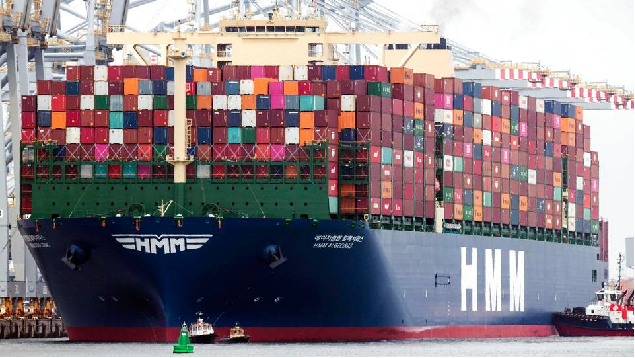Reefer containers or refrigerated containers are used to transport perishable goods such as fruit, vegetables, dairy products and meat. During the transport periode we want to measure the condition of fruit by measuring the ethylene levels.Does anyone have any experience of using Lora on seagoing vessels?
Hi @pieterhoenderken, I have done detailed LoRa coverage surveys on a jackup-drilling rig. The Valaris/Rowan Gorilla VI. Just search on Google images for pictures.
It was LoRa, not LoRaWAN. We used IMST modules as they have very good software that allows extended radio “ping” type tests between 2 modules. We put one system in the antenna farm on the roof of the control room and then tested from numerous locations above decks and below decks, down to the cellar-deck at the far end of the rig. Both systems used small dipole antennae.
The radio penetrated up to 4 heavy steel bulkhead walls or decks.
There were localised places with no-service behind heavy machinery, under cable ladders, etc.
There were times with no-service when heavy electrical machinery was running and the noise floor came up from about -95 dBm to about -85 to -90 dBm.
EDIT: I should have added that we did not test running a gateway over geo-stationary satellite (VSAT or Inmarsat) to a LoRaWAN core that is onshore.
Thanks for this info, very helpfull
There are commercial examples of LoRa based sensors with Ant’s mounted external to containers (potentially vulnerable to damage in transit/handling so think about design/protection & resiliance) and external units used for e.g. lock/door tamper detection, etc. and sytems monitoring for ripeness (bananas!) or status of contents (fresh food/temp sensitive drugs), shock/vibration detection (computer hard drives) etc. Tests have shown it is relatively easy for the LoRa RF signal to escape from standard containers (as is the case with domestic and commercial fridges/freezers etc. for cold chain monitoring etc.) and many ports around the world now have at least some LoRa kit installed for monitoring plant, people, machinery and containers (usually location etc.) so the fact that there is all that metal around causes problems but isn’t insurmountable. Indeed LoRa is quite resilient in a reflective/multipath environment where constructive and deconstructive interference can wreak havoc on legacy rf systems.
The problems tend to come when containers stacked and layered as even LoRa signals start to struggle.
Having a ‘closed’ LoRWAN system on the ship is one option (2/6 GWs distributed depending on vessel size and working with a local LoRaWAN server (to avoid potential network latency/connection issues such as over long satellite links to middle of open ocean) - but that is out of scope for TTN (unless using say a private TTI instance?!)
You wont necessarily have control of which vessel for which container and need to think aboout how does app behave when your unit is 10 deep, 10 in and 10 down on something like this:

I have had clients in the past looking at LoRa/LoRaWAN deployments deep in engine room and the bilges, tanks etc of such heavy marine engineering applications (vessels & rigs + fixed instrastructure) - often with good/better than might be expected results…but it is always the corner cases and unexpected deployment scenario’s and issues that come back and bite you, often requiring bespoke per install solutions at times.
Hi @Jeff-UK, agree with your comment about antennas in these applications being vulnerable. Will come back the forum in the future but just as a heads up I’m working on a robust low profile antenna about 15mm high. One application would be recessed into manhole sewer covers, concrete lids on tanks etc. This would fit nicely into the corrugations on the outside of a shipping container.
Hey Tony good to hear from you again - we need to catch up sometime - will PM you later. Would be good to get update on your GW dev and the potential Ant from that as discussed last year.
Most container solutions I have seen have seen deployment with a recessed Ant just below upper lip of container in one of the ‘ribs’ on smaller end vs side as you suggest - high up to prevent damage from ‘passing’ traffic/vandalism and also to gain range from height  Makes for a very directional ant but seems to work well given the local reflections in real world deployment help scatter signal in direction that GW can pick up - having 2 or more GW’s in proximity as above allowing for container orientation seems to help too!
Makes for a very directional ant but seems to work well given the local reflections in real world deployment help scatter signal in direction that GW can pick up - having 2 or more GW’s in proximity as above allowing for container orientation seems to help too! 